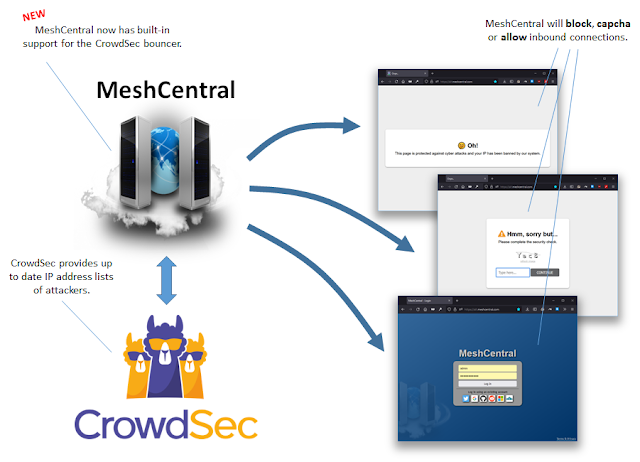MeshCentral - CrowdSec, LDAP, CAPTCHA, DNS Multi-Relay and more

MeshCentral has kept up its evolution with many more security related improvements. The big one this week is the integration of a CrowdSec bouncer that is now built-into MeshCentral to allow rapid and collective reactions to internet threats. We also have an improved LDAP integration with account images, optional CAPTCHA for new accounts on the login screen, a powerful improvement to DNS web relay to allow multiple HTTP/HTTPS session at the same time and more improvements to MeshCentral Router and the MeshCentral web site. On a personal note, I will be taking vacations from September 7th to October 19th to mostly travel and relax in Europe. In any case, here are this week’s developments in detail: CrowdSec bouncer integration . CrowdSec is a French company that runs a free, open source, community driven IP address reputation service. Servers install the CrowdSec agent and notify the CrowdSec server of detected threats and from what IP addresses they are coming from which is then sen...
